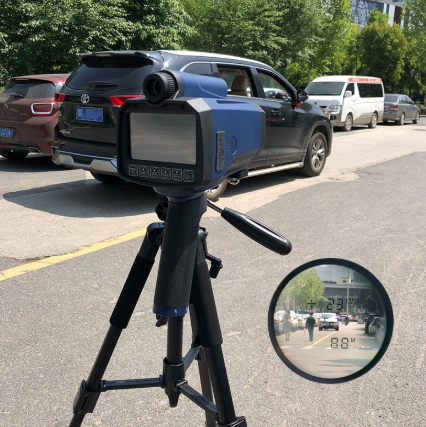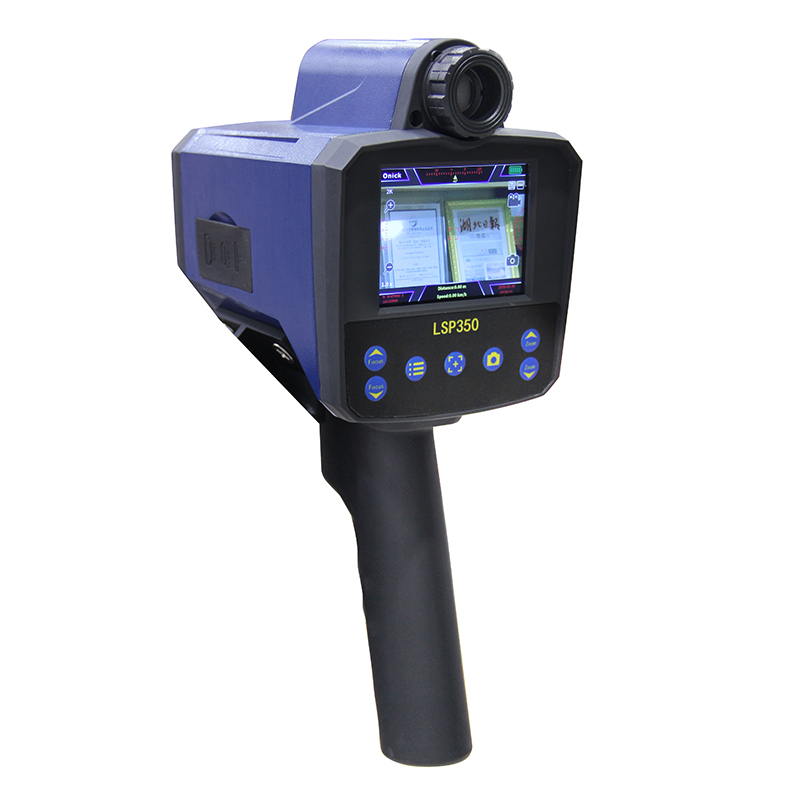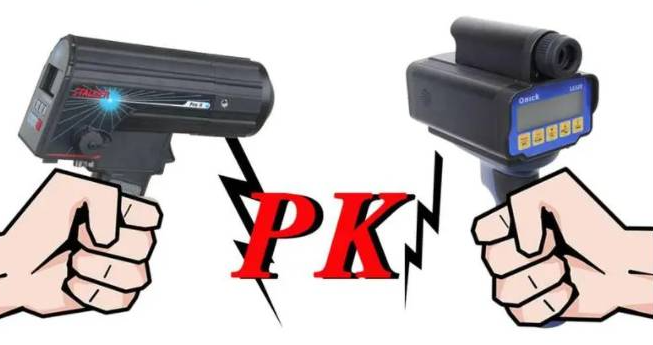Currently, the most commonly used speed measurement methods in my country include radar, laser, ground-sensing loops, video, and infrared detection. Radar and laser are the most widely used.
Speed Meter Comparison
Differences - Different Principles
Laser speed measurement uses the time difference between the transmitted and received laser beams to determine the distance between the measured object and the test point. Laser speed measurement performs two laser ranging measurements at specific intervals, determining the distance the object moves during these intervals and, therefore, its speed.

Radar speed measurement utilizes the Doppler effect, where a moving object causes a frequency shift in the received electromagnetic waves. Radar speed guns calculate the speed of the measured object based on the frequency shift of the received reflected waves.
Different Speed Measurement Ranges
Laser speed measurement has a longer effective range than radar, measuring distances up to 1000 meters and enabling long-distance capture. The electromagnetic beam emitted by radar has a certain angle of spread, so its effective speed measurement range is shorter than that of laser speed measurement, with a maximum range of 800 meters (for large vehicles).
Different Measurement Accuracy
The laser beam emitted by a laser speed meter is extremely fine (the laser emitter has a divergence angle of 3 mrad), enabling precise measurement. Its diameter is only 30 centimeters at 100 meters, resulting in a small illumination area, allowing it to be aimed at any target.
The radar beam of a radar speed meter has a larger illumination area than a laser beam (ray), making it easier to acquire a target and eliminating the need for aiming, making it difficult to measure a single vehicle's speed. The radar's fixed speed measurement error is ±1 km/h, and the error is ±2 km/h when moving.
Onica Speed Meter with Camera
Advantages and Disadvantages of Laser Rangefinders and Radar Speed Meters
Advantages of Laser Speed Measurement:
1. Sensitive Speed Measurement: The measurement response is fast, with a single speed measurement time of approximately 0.33-0.66 seconds. 2. Anti-interference: Because the laser beam of a laser speed meter is extremely fine and its response time is extremely fast, common electronic detectors on the market are ineffective against interference and detection.
3. Class I safety laser, safe for the human eye: Laser speed meters currently used in most countries use Class I safety lasers, which are safe for the human eye.
4. Excellent evidence collection capabilities: Laser speed meters offer far greater evidence collection capabilities than radar speed meters, and therefore are widely recognized and promoted worldwide. For example, the Omika LSP320 handheld camera laser speed meter can simultaneously measure speed and take photos, which are then stored in the device for easy evidence collection.
5. Low energy consumption, long operating time: Laser rangefinders consume relatively little power and can operate continuously for extended periods on a single charge.

Disadvantages of laser speed measurement:
1. Stationary use: Due to the principle of laser speed measurement, laser speed meters cannot be used while in motion and can only be used when stationary. Therefore, traffic police typically place the devices in patrol cars and use them while they are parked. 2. Expensive: Laser speed guns are more expensive than radar speed guns and are more suitable for those with ample budgets.
Advantages of Radar Speed Measurement:
1. Dynamic Use: Radar speed guns can be installed on patrol cars to detect vehicle speeds while in motion, making them a crucial component of "mobile electronic police."
2. Affordable: Radar speed guns are more affordable than laser speed guns and are more suitable for those with a tight budget.
Disadvantages of Radar Speed Measurement:
1. Susceptibility to Interference: If there are highly reflective objects near the target, the speed radar will only detect the highly reflective object. When two vehicles are traveling side by side, the radar speed gun cannot distinguish which vehicle is speeding. The speed radar's readings can also be erroneous when the measurement signal undergoes multiple reflections. Radio waves can interfere with the speed radar, distorting the measurement.
2. Weak Concealment: Radar sensors can detect radar speed guns, but it is extremely difficult to detect the presence of laser speed guns.

Onick Handheld Laser Speedometers
Currently, many law enforcement agencies in China are using the Onick LS320, LS320, and LSP350 handheld laser speedometers with printing capabilities, and the LSP320 and LSP350 speedometers with photo evidence collection. Laser speedometers are a new type of traffic management and enforcement tool, providing a reliable means of collecting evidence for speeding violations. They overcome the shortcomings of radar speedometers, such as slow measurement speed, wide beamwidth, and the adverse health effects of radiation. They offer advantages over radar speedometers: they can measure both speed and distance, offering robust functionality. They can effortlessly determine the speed of a single vehicle, even a motorcycle, on a busy multi-lane highway. With the widespread use of new equipment, radar detectors alone are no longer sufficient. Therefore, laser speed measurement will be increasingly used in future traffic enforcement.


